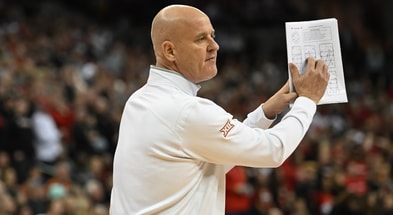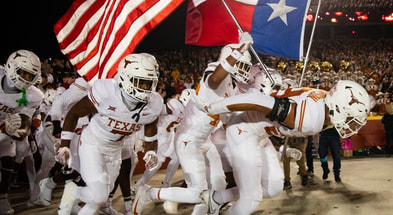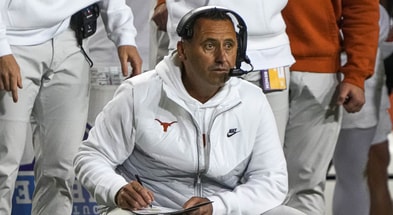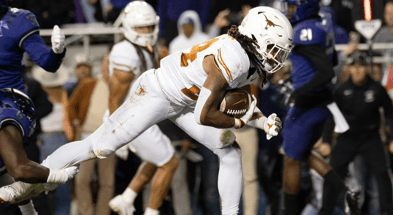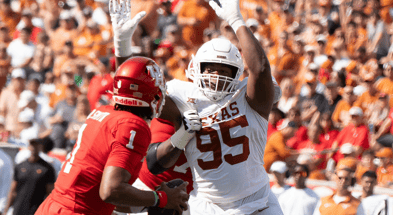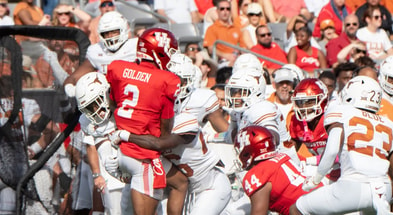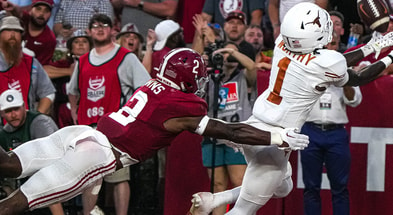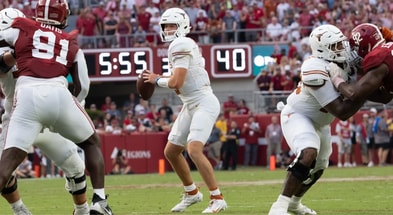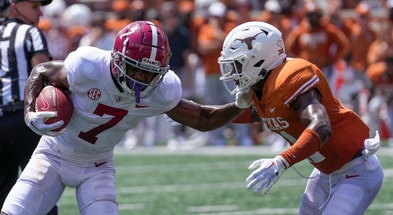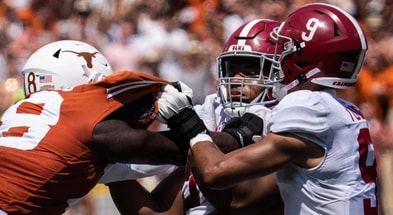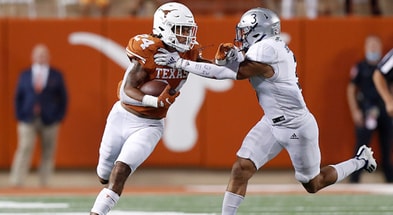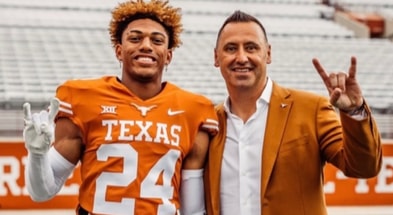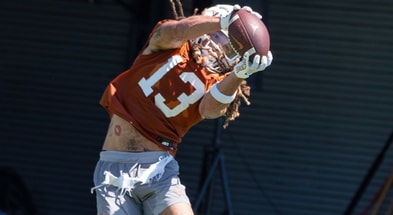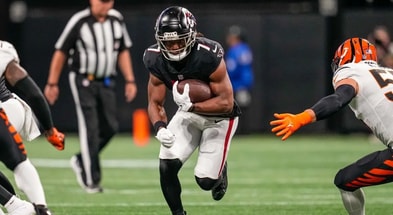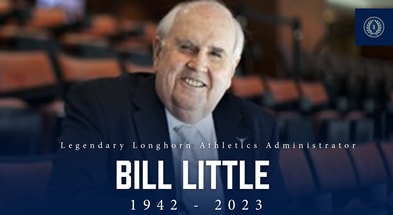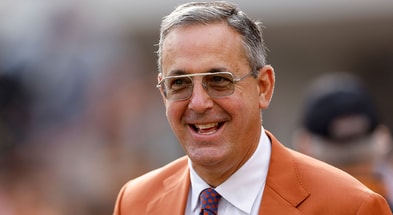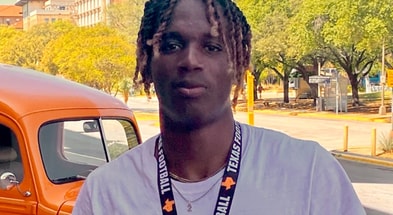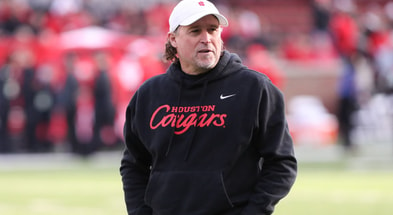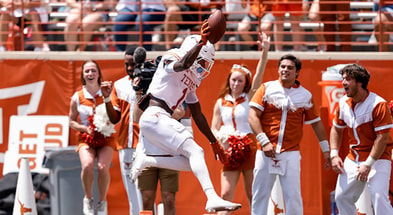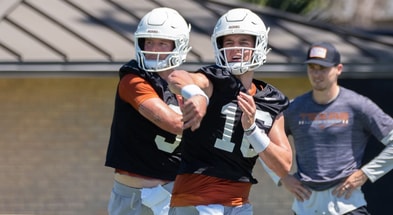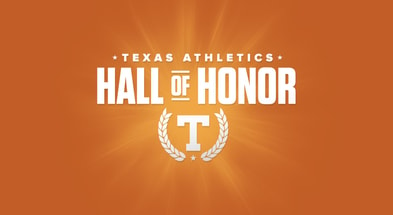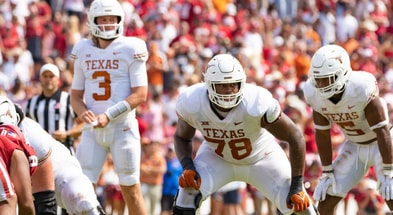Lincoln Riley's "Pro-Raid" in Southern Cal
I was very bullish on the Graham Harrell era for the USC Trojans.
California, and Southern Cal in particular, have been cranking out privately trained quarterbacks and skill talents for a long time. For the Trojans to seek to emphasize them with the Air Raid offense made all the sense in the world.
The original Trojan dynasties established by John McKay stood out with their running backs. Particularly with their willingness in the 1960’s to be early in the integration of black athletes such as running backs Willie Brown, O.J. Simpson, and Anthony Davis.
The Pete Carroll teams were famous for their amazing skill players as well, particularly in their 2003-2005 run when they had quarterback Matt Leinart throwing to Mike Williams, Dwayne Jarrett, or Steve Smith and handing off to LenDale White and Reggie Bush. In reality, the Carroll teams were really powered by having NFL offensive lines and some phenomenal defenses, but Bush and Leinart got the Heismans and major accolades.
Most people forget, for instance, that the 2004 team had a pair of All-American defensive tackles who shut down Adrian Peterson in the National Championship game. Or that Troy Polamalu played on the breakout, 11-2 squad in 2002 before being drafted by the Pittsburgh Steelers. Or that every member of the 2005 offensive line was drafted.
The modern game is less about fielding a brutish line and handing off to star athletes in the backfield. I know Georgia ostensibly won the 2021 National Championship in that fashion but I’d argue it was more about landing a few deep shots on Alabama’s backup cornerbacks and the Tide missing both of their NFL receivers for the majority of the title game.
Graham Harrell didn’t really get the plane off the runway but the program was clearly deteriorating around him. When Clay Helton hired Todd Orlando I knew it wouldn’t be long before he was sacked. A popular conception was that Harrell’s averseness to running the ball was the problem, obviously championship USC teams run the football with famous running backs.
I don’t think that was really the issue, but it certainly won’t be the problem in the Lincoln Riley era. While he was suffering in Oklahoma, Riley was running an interesting offense I’ve settled on describing as a “Pro-Raid.” Like Harrell, Riley learned the game at the feet of Mike Leach at Texas Tech in the early 2000s, but he’s a very different sort of guy than Harrell and runs a very different style of offense despite the commonality in the Air Raid roots.
Graham Harrell and Lincoln Riley aboard the pirate ship
Graham Harrell was the first and last blue chip quarterback to take the reins of the Mike Leach offense at Texas Tech. Kliff Kingsbury, the blessed, manned the helm from 2000 through 2002 before a parade of three consecutive redshirt seniors did so from 2003 through 2005. In 2006 a young Harrell took over before leading them to their heights under Leach in 2008, leaving for the NFL (short-lived), and Tech ran the head pirate Leach out of town after the 2009 season.
Leach’s entire offensive philosophy is often summarized as being “pass all the time” or “balance is making sure everyone touches the ball,” but I think a more fundamental ingredient to his success is the control he gives to his quarterbacks. Mirrored passing concepts and freedom to audible at will made the Leach offense incredibly flexible during games. Harrell seems to try and implement something similar with his own quarterbacks.
Riley was a quarterback on the team for a brief period of time as an apparently ineffective walk-on before Leach cut him, only to offer him a student assistant position on the team. He was a grad assistant and then wide receivers coach in Lubbock by the time Harrell took over at quarterback. His interaction with the game and promotion through the ranks has been as a play-caller, same as Harrell, but Riley virtually always did so as a coach and not as a player.
The Lincoln Riley offense is defined less by giving the quarterback an array of passing options and audibles at the line (although Baker Mayfield did have a good amount of autonomy in 2017) and more about using the run game and play-designs to set up kill shots for his quarterback to anticipate and then take advantage of. For instance, his “shallow sting” concept.
You have a foundation from the Air Raid in the mesh pattern, two receivers crossing each other on drag (shallow) routes underneath, except one of them is only feigning the route. The goal is to get a match coverage defense to determine the routes and who’s got who and THEN you break off the shallow route and turn up the field. As you can see here, the defense often doesn’t even cover it, there’s no one looking for it.
Clever, targeted play designs are more of Riley’s purview. Remember he came up in the game due to his mind for the game, not his ability on the field. Harrell ultimately dominated at the college level with his ability to command the offense on the field.
I believe this lead Riley to have a greater appreciation for the run game than Harrell, because nothing beats play-action for setting up defenses for clever plays designed to break them down. His offenses at Oklahoma are consequently very different than a Harrell or Leach Air Raid and have some features you increasingly see at the NFL level as teams take more athletic quarterbacks.
The run game in the “Pro-Raid”
The nature of the spread offense requires offensive balance. The major benefit of spreading defenses out is the ability to attack them in isolation. When defenders are spaced out they can’t help each other as easily, weak spots can be isolated (either on the perimeter or in the box), and missed tackles can be disastrous.
The trade-off is when defenses make a choice to force you to beat them left-handed. For instance, Mike Leach’s teams will regularly face dime personnel and drop-eight defenses from units unafraid of his rushing attack. They don’t mind giving you advantages in the box because they’re unafraid of reprisals from the running backs.
Lincoln Riley doesn’t particularly want to face dime defenses all day but it hasn’t come up too often because Oklahoma would happily run the ball against favorable looks. They wanted to run the ball anyways in order to set up their play-action game.
A spread offense seeking balance with a run game and play-action like Riley’s can be differentiated by how they run the ball against a nickel front (six defensive lineman/linebackers and five defensive backs). Every spread offense looking to run the ball has to answer the following questions:
- When the defense has six in the box, how do you account for all six defenders with your run game?
- When the defense sneaks a defensive back into the box to outnumber your run game, how do you identify him and account for his presence?
- What’s your solution when you HAVE to run the ball (short-yardage, red zone, holding onto a lead) and the defense adds extra defenders?
For many spread offenses, especially offenses with an Air Raid background, the solution to some of these questions is using an off-ball tight end and running RPOs. The off-ball tight end can move around and block the sixth defender the five O-linemen can’t get.
The RPOs handle the defensive backs. You sneak your nickel into the box, we throw the ball out wide to the slot into an area he vacated. Drop a safety down? We’ll throw a glance/skinny post route over his head to a receiver going down the field.
Well Lincoln Riley never really loved RPOs at Oklahoma, although he had a few of varying degrees of complexity. RPOs make it harder to protect your quarterback because the O-line is focused on run blocking. They also invite complexity from the defense in disguising who’s doing what in order to try and confuse a quarterback into tossing a pick within the narrow window of time and protection he has to make a read and throw. The world of creeper and sim blitzes (bringing four from different angles) and flyover defenses (three deep safeties pre-snap) make it hard on a quarterback reading for RPOs.
Riley preferred a solution from the older style of spread offense before RPOs took over in the 2010s, quarterback run options. Ironically, this solution is increasingly the more “pro-style” way to handle it. This is in part because NFL rules on ineligible receivers (O-linemen can only get one-yard down the field whereas in college they can go three) makes it harder to run RPOs. It’s also because it’s easier to get a hold of a game-changing athlete in the NFL than in college and there are more coming up every year because high schools increasingly teach their best athletes to play quarterback.
Check out how Riley utilized his quarterbacks at Oklahoma:
| Year | Quarterback | Passing numbers | Rushing numbers |
| 2017 | Baker Mayfield | 404 attempts, 4,627 yards, 11.5 ypa, 43 TDs, six INT | 97 carries, 311 yards, 3.2 ypc, five TDs |
| 2018 | Kyler Murray | 377 attempts, 4,361 yards, 11.6 ypa, 42 TDs, seven INT | 140 carries, 1,001 yards, 7.2 npc, 12 TDs |
| 2019 | Jalen Hurts | 340 attempts, 3,851 yards, 11.3 ypa, 32 TDs, eight INT | 233 carries, 1,298 yards, 5.6 ypc, 20 TDs |
| 2020 | Spencer Rattler | 317 attempts, 3,031 yards, 9.6 ypa, 28 TDs, seven INT | 81 carries, 160 yards, 2.0 ypc, six TDs |
| 2021 | Caleb Williams | 211 attempts, 1,912 yards, 9.1 ypa, 21 TDs, four INT | 79 carries, 442 yards, 5.6 ypc, six TDs |
The Sooner numbers slipped the last two years as their O-line struggled to rebuild after the 2018 crew virtually all went pro and they rolled through the young and less reliable Spencer Rattler and then freshman Williams. The higher “yards per attempt” numbers correlate to their stronger teams. When the Sooners were lining up kill shots on play-action they were absolutely devastating. Under Jalen Hurts they had to default to a quarterback power run game because of his limitations as a passer.
At 6-foot-1 and 220 pounds with legit quickness and some breakaway speed, Williams is ideal for the run game dimension of the system but is also a strong-armed passer. He’s in the sweet spot as great passing prospect with running ability.
When the quarterback can throw down the field but also do some work in the option run game it really adds up for the offense. For instance, in personnel choices. Oklahoma would use H-back/off-ball tight ends like other spread teams but they’d select for athleticism and pass-catching ability rather than blocking and they’d get away with it because of the quarterback options in the run game.
Take the GT counter play they famously used so well under Riley, here’s the version teams would use before they started attaching the quarterback keep read.
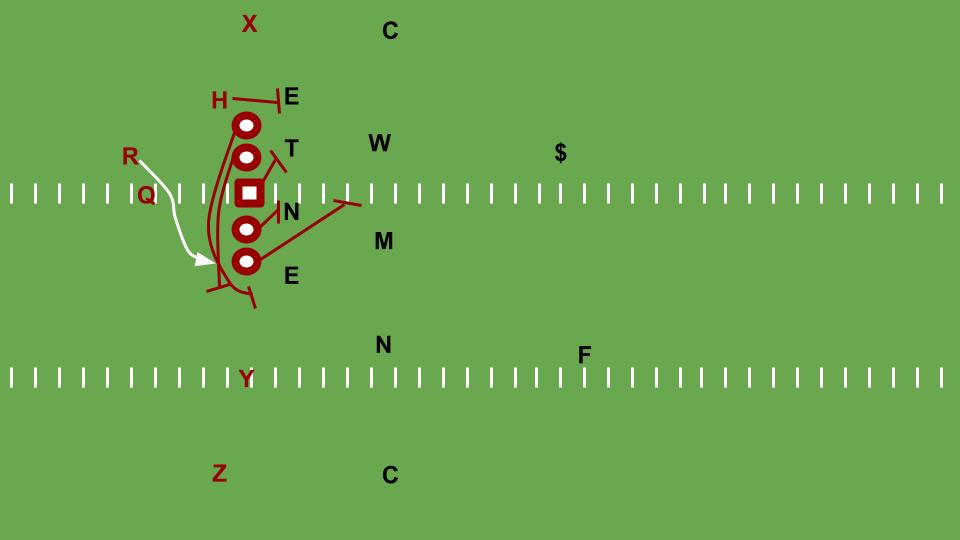
The tight end/H-back player would need to be able to block a defensive end to make sure he didn’t blow the play up from the backside. Similarly in the zone and other gap schemes, a tight end would routinely have an important and sometimes difficult assignment.
The pulling guard kicks out the unblocked end or pins him inside and then the pulling tackle leads up for the linebacker. If the nickel came off the edge? Tough beans unless you have an RPO.
But in Oklahoma’s option system…
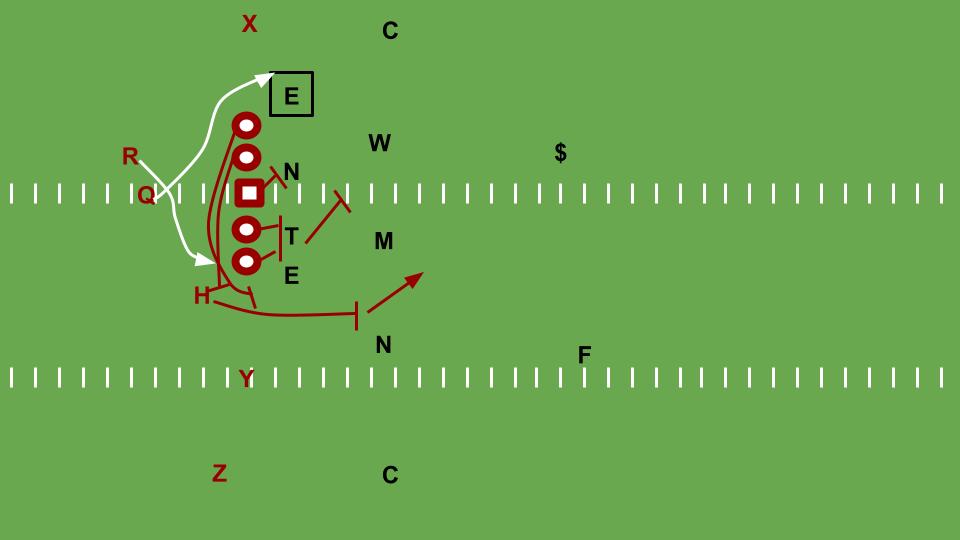
They “block” the backside end with the threat of a quarterback keeper and gain the H-back to block someone else. This could be an easier target, like a linebacker or safety, which meant this position didn’t need to be manned by an exemplary blocker.
What’s more, if you’re regularly releasing your H-back to go block a second level defender, it adds an even nastier component to the play-action game when he pretends to do so only to race by defenders on a route.
The Sooners regularly made the most of this with their other tight ends as well. Guys like Mark Andrews or Austin Stogner, 6-foot-4 plus receivers who were mismatches in the passing game could go do Travis Kelce impersonations rather than languishing in the box as blockers. If they were asked to block then their assignment could be pretty far down the list. Toughest six guys? You read ’em or block ’em with a linemen. Next toughest? H-back can get him. Next? Okay, your turn flex tight end.
The quarterback option game unlocks so much of the Riley offense and is why Caleb Williams gave them such a lift in 2021 when he replaced the less mobile Rattler even though he barely knew what he was doing as a quarterback. With a run threat re-established, Riley could get receivers running wide open.
Riley’s “Pro-Raid” at USC
The most important ingredient to this offense is the quarterback and it’s why Riley had a carefully engineered recruiting strategy to maintain a pipeline. He took quarterbacks every other year and when he did, he aimed high on dual-threat players with NFL physical talents.
Next in line is Malachi Nelson, who was committed to Oklahoma and flipped to USC before Caleb did. Nelson’s high school rushing numbers aren’t great so watch for that down the line but he’s a good athlete and major passing talent.
Fielding NFL wide receivers is the name of the game right now and USC is as well positioned to recruit them as any program in the nation because they grow on trees within the state.
Offensive line is the tricky spot. Oklahoma built some dominant lines by recruiting high upside 3/4-star talents and developing them effectively within this system under coach Bill Bedenbaugh. He didn’t follow Riley to L.A. so they took Josh Henson from Texas A&M. Henson was a very effective recruiter at A&M and before that a fantastic developer in the zone running game at Missouri and Oklahoma State. Great offensive linemen do not grow on trees in California these days so hiring someone with an eye for developing less obvious talent was essential.
Most of the existing roster will thrive in the new system. Lake McRee’s abilities as a receiving tight end won’t go to waste thanks to William’s ability to read an Edge in the option, their receivers will still have an Air Raid-inspired playbook, and the line will get some help in the form of more run game practice and play-action protection concepts.
It’s easy to see why Riley was willing to betray the Sooners in the fashion he did. USC is perfectly situated to help him recruit receivers and quarterbacks with NFL talent, pile up wins beating down a lowly Pac-12 rather than in the SEC, and continue to get regular shots in the playoffs. For old fashioned USC fans, you get to watch a modern offense and still pretend like it’s all about running the ball.
It should be a very interesting and explosive program to watch for everyone, except Oklahomans.
Discuss the fit of Lincoln Riley at USC for free on the Flyover Football board!
